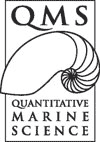
The 7th International Abalone Symposium
Pataya, Thailand, 19-24 July 2009
The International Abalone Symposium is the principle international gathering for reviewing current issues associated with abalone. It is held once every three years and is promoted by the International Abalone Society. The symposium draws together a diverse community of people and multidisciplinary research that is driven by the need to continue the global supply of this highly valued marine species against a downward trend of wild stocks.
Contributions at the 7th International Abalone Symposium 2009 highlighted the issues facing abalone today including changing markets, the expanding aquaculture industry, troubled fisheries, poaching, growing pressure for conservation and restoration of wild-stocks. With the exception of Tasmania, wild stock are in poor shape but in the case of the South African fishery, the entire wild catch has been officially declared illegal.
Talks were presented in succession and divided into the following seven themes; 1) international production and marketing, 2) country presentations, 3) pathology and disease, 4) ecology and fishery management, 5) genetics and biotechnology, 6) biology and physiology, and 7) larval biology and nutrition biochemistry. The symposium attracted 170 participants from 20 countries with a strong industry delegation from Tasmania.
I presented a talk titled “The relationship between growth, size at maturity and water temperature in wild populations of Haliotis rubra in Tasmania” as part of the Ecology and Fishery Management Theme. The results I analyzed included growth data from 30 populations of wild caught abalone and maturity data from 290 wild populations distributed around Tasmania. The links between growth, size at maturity and water temperature were quantified. Most of the personal comments I received remarked favourably on the large number of populations and I am very grateful for the many interesting comments and suggestions for further research.
Networking was facilitated by the friendly nature of the delegates, and by the broad background of people present. Owing to the small informal nature of the symposium, people enjoyed a strong camaraderie of networking. The close proximity of the speaker’s hall, the poster exhibition stalls and the dinning hall all combined to provide an excellent opportunity to network and continue discussions at leisure.
The symposium was an excellent opportunity to gain knowledge on what is involved in marketing abalone to the world and to understand some of the market forces driving the price of abalone. These interactions have allowed me to understand the short and long-term obstacles that face the abalone industry in Australia. Tasmania can be proud of their sustainable abalone fishery and the only drawback to the symposium is that the long-term trend of sustainable catches, in the Tasmanian wild fishery, was not showcased at all.
I am grateful to the UTAS-CSIRO Joint PhD Program in Quantitative Marine Science program and University of Tasmania School of Zoology for providing financial support to attend the symposium. This was my first time as a presenter at an international symposium and I would also like to thank the Tasmanian Aquaculture and Fisheries Institute for providing the large raw dataset, culminating from many years of field surveys. I will also like to thank staff at the CMAR for their tremendous help in providing the SST data. Finally I would like to extend a warm thanks to all the people associated with the Tasmanian Abalone Fishing Industry for their support.